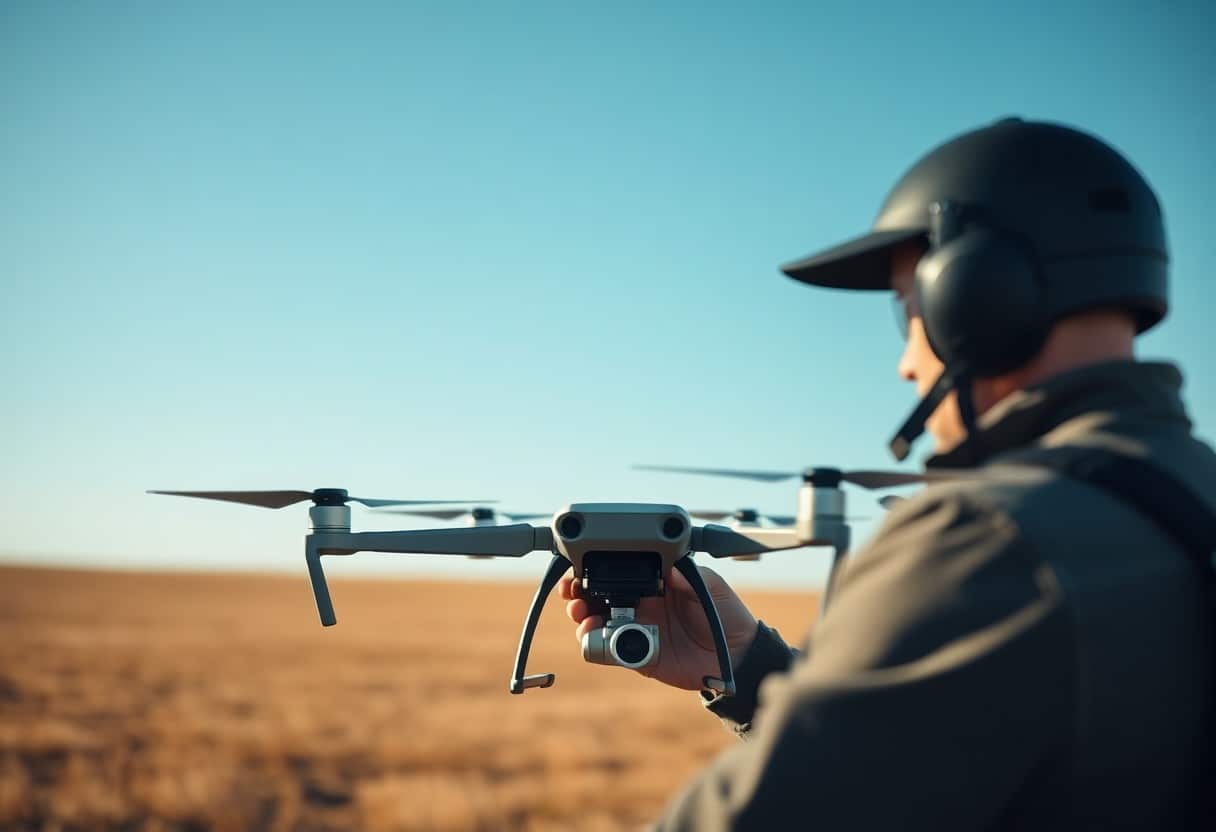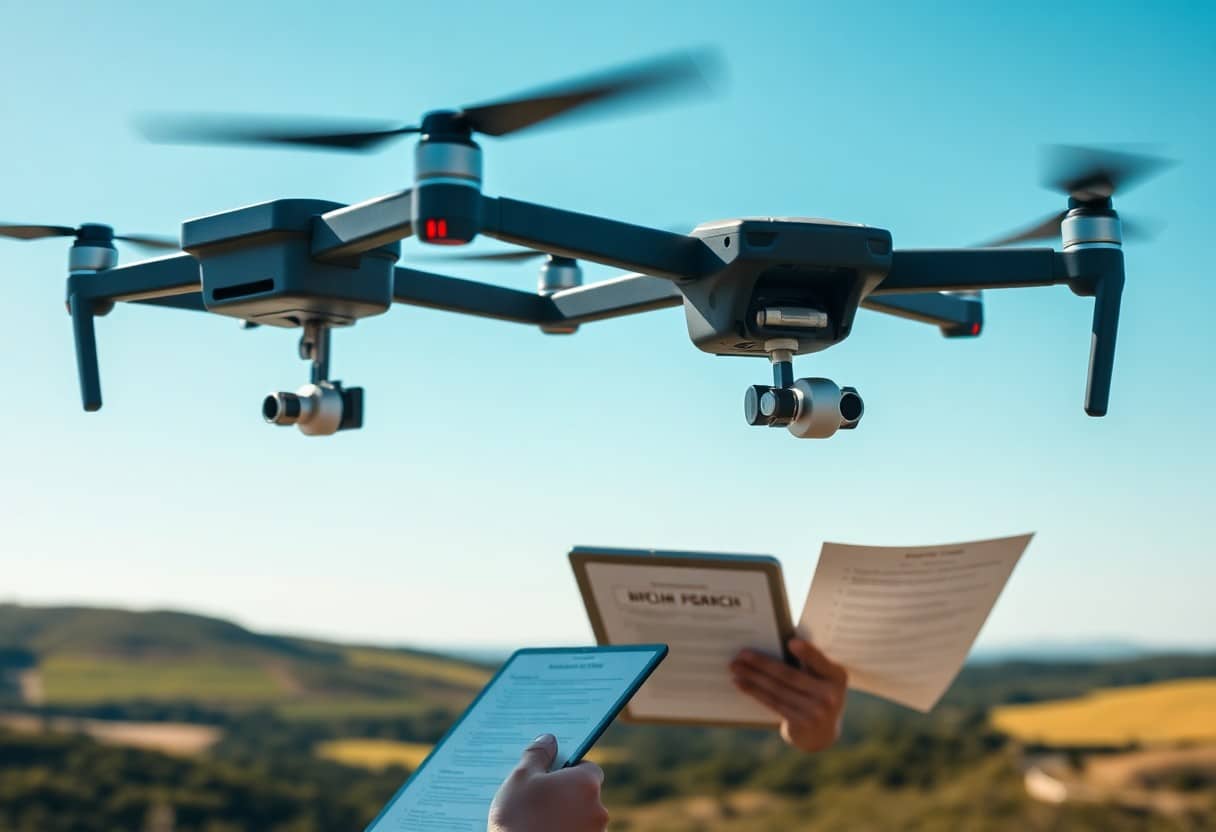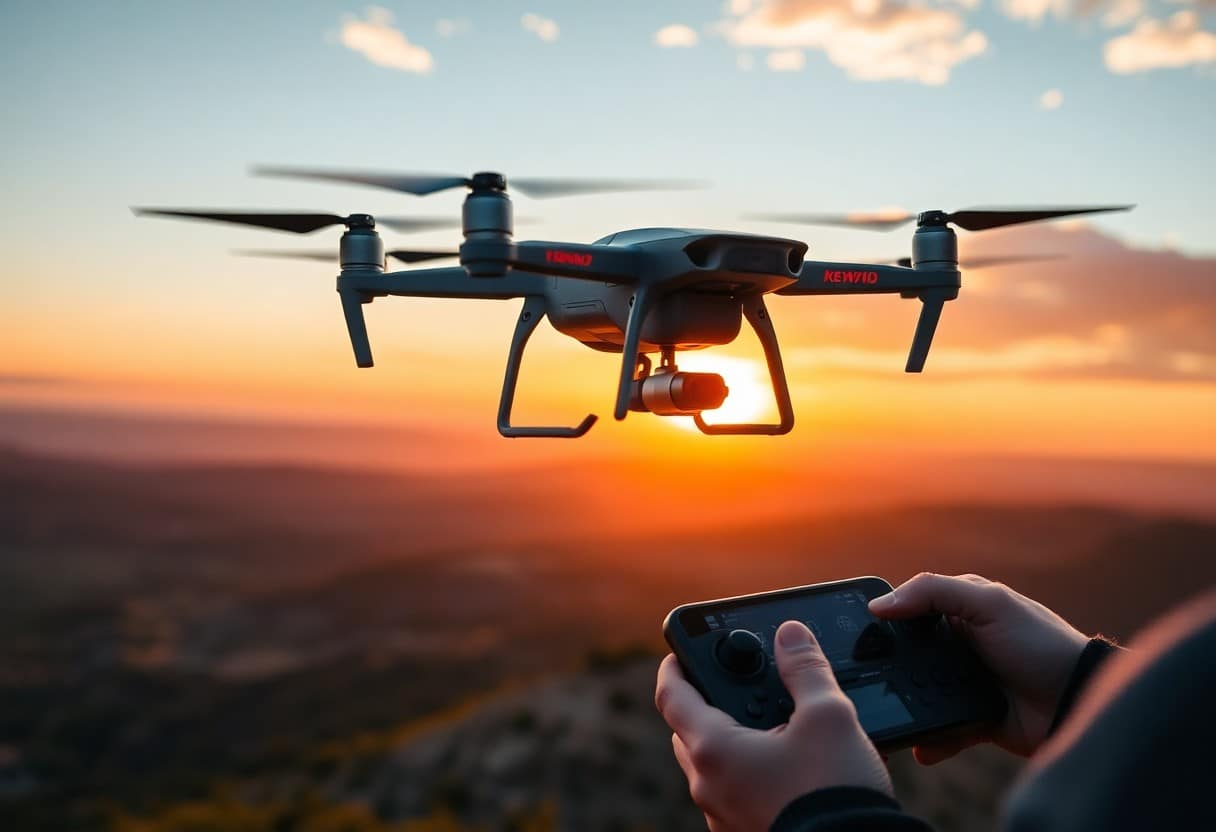What are the key technologies for successful drone piloting?
When you decide to operate the drone, master theKey Tips for Successful FlyingIt's important. First, you need to knowBasic Flight PrinciplesIt is also important to familiarize yourself with the capabilities of your drone and the changes in the environment. It's also important to familiarize yourself with your drone's capabilities and the changing environment. Don't forget to conductAdequate security checksto avoid accidents. Stay alert before and during your flight and follow local laws and regulations so you can enjoy an impeccable flying experience.
Important points:
- Understanding Parameters: Familiarize yourself with local drone laws and regulations to ensure legal flight.
- Weather ForecastCheck the weather conditions and choose the right time of day to fly, avoiding strong winds and bad weather.
- Keep your eyes open.: Maintain a line of sight to the drone while flying to ensure that you can control its operation at all times.
- Familiarize yourself with the operator interface: Know the controller and application of the drone well enough to be able to respond quickly.
- Conduct pre-flight inspection: Check the condition of the drone's batteries, propellers, cameras, and other components before each flight.
- Practicing Basic Skills: Concentrate mentally in an open area and familiarize yourself with the basic skills of take-off, landing, and smooth flying.
- Record flight data: Keep a flight log to record the conditions and experiences of each flight to improve future flights.

Understanding Drone Components
Understanding the basic components of a drone is critical to successful piloting. Your drone is made up of several key components, each with a unique function that affects the performance and stability of the overall operation. Familiarizing yourself with these components will help you master your flying skills and ensure that your drone performs optimally during flight.
Basic components of a drone
The basic components of a drone include the fuselage, batteries, engines, propellers and control system. The fuselage provides structural support, the battery powers the system, the engines and propellers work together to provide lift, and the control system allows you to maneuver your flight path. Understanding how these components work can help you make better adjustments and maneuvers while flying.
The Importance of Calibration
The calibration of a drone is critical to ensure safe and stable flight. Correct calibration prevents the drone from deviating during flight, thus avoiding accidental crashes.The sensors should be carefully checked and set up before each flight to ensure that they are reading data correctly. Before each flight, you should carefully check and set up the sensors to ensure they are reading the data correctly, which will enhance your flying experience and the efficiency of the drone's operation.
There are a few things you need to keep in mind during the calibration process: first, theEnsure that the drone is placed on a flat and stable surfaceThis will prevent environmental factors from interfering with the sensor readings. Next, follow the manufacturer's instructions for periodic calibration so you can adapt to different flight conditions. Finally, with each pre-flight calibration, you can check, either online or using a mobile app.Ensure the stability of the drone, thus increasing your confidence in the deviceThe
Pre-flight Preparation
Before flying a drone, make adequatePre-flight PreparationIt is very important. First of all, you need to familiarize yourself with the operating manual of the drone and check if all the components are functioning properly. In addition, you must consume enough battery power to enable you to fly safely, and don't forget to check the relevant laws and regulations. If you are a beginner, it is recommended to refer to8 Powerful Steps to Improve Your Drone Photography Skillsfor more details.
Pilot Checklist
Create a detailedPilot ChecklistIt's the key to making sure your drone is safe to fly. This list should include items to check the batteries, propellers, cameras and controllers to ensure that all equipment is functioning properly. Also, check the condition of your drone to make sure that it will be able to perform your flight properly.
Weather conditions and their effects
Weather conditionsIt has a significant impact on the safety and effectiveness of drone flights. In unsuitable weather conditions, such as strong winds, rain, snow or poor visibility, theYou should avoid taking off.This increases the risk of accidents. When operating a drone, always check the preliminaries to make sure you are flying in a safe environment.
In particular, it is important to note thatStrong windIt will challenge the stability of the drone, which may lead to control difficulties or even accidental crash. Rainfall or humid conditionsIt can also affect the drone's electronics, which in turn affects its performance. In addition, some drones react differently to cold or hot weather, so always check the weather forecast and choose the right time of day to fly, which will increase your flight success rate and minimize potential losses.
Flying Techniques
Successfully flying a drone requires a few basic flying skills. Learn how to fly a drone bySimplify Your Workflow - 7 Steps to Optimize Your 3D Modeling SoftwareYou will be able to increase your ability to maneuver the drone, ensuring more stable flights and reducing the likelihood of accidents.
Basic Actions
In the early stages of drone flight, you should focus on a number ofBasic Actionsto build confidence, for example:
- Taking off and landing
- Forward and Backward
- Move left and right
Advanced Flying Strategy
grasp (often fig.)Advanced Flying StrategyIt is important to improve your flying skills. These strategies include maintaining a stable attitude, utilizing slow and steady controls, and responding effectively to wind and weather changes.
- Focus on the center of gravity of the drone
- Practice flying at different speeds
- Explore various flight modes
Advanced Flying Strategies
| be tactful | descriptive |
| Wind Direction | Checking the current wind speed and direction before flying can help you control the drone better. |
| Dynamic Response | Enhancement of rapid response capability to ensure quick response in potentially dangerous situations. |
Combined with the above strategies, advanced flying requires you to keep practicing and remain keenly aware of changes in the environment. Good observation and Responsiveness It will enhance your flight safety and minimize potential hazards.
Further Tips
| finesse | significance |
| Night flights | Corresponding lighting is required to improve visibility to avoid collisions. |
| Contingency Plan | Develop an emergency plan to respond to unexpected events to ensure your safety and the safety of your drone. |
Security Agreements
When operating the drone, followSecurity AgreementsIt is vital that this protects not only you, but also other people and property. Make sure you are well prepared before you fly, check your equipment, and follow all laws and regulations to avoid possible hazards. Also, keep your distance from other aircraft to prevent accidents.
Release the no-fly zone.
Before you fly a drone, you need to knowNo Fly ZoneThese areas are usually located near airports or specially protected sites, such as government buildings or large event venues. These areas are usually located near airports or specially protected sites such as government buildings or large event venues. Flying in these areas is not only illegal, but can also result inSerious consequencesThis is why it is important to identify and act with caution.
Emergency Procedures
No matter how careful you are, accidents can still happen during a flight, so it's important to know what to expect.Emergency ProceduresIt's important. In the event of a malfunction or other dangerous situation, you need to be able to make good judgment quickly and take the necessary action to protect yourself and the drone.
When faced with an emergency situation, the first thing to do is to remain calm and ensure your exact position and altitude. If the drone malfunctions, use thereturn functionor safe landing procedures to avoid landing in crowded areas. Regularly check the power while flying to ensure that you do not lose power in the air. In addition, always be prepared to performManual controlThis will enable us to keep track of the situation and ensure the safe landing of the drone in case the automatic mode fails.

Post-Flight Procedures
Immediately after completing your flight, you should perform post-flight procedures to ensure that your drone is operating in optimal condition. This includes checking the flight log, collecting the required data, and performing the necessary maintenance and servicing on the drone. These steps not only extend the life of your drone, but also ensure the safety and effectiveness of future operations.
Data Collection and Analysis
Once you have completed your flight, you need to carefully examine and organize the data you have collected to provide useful insights. This includes analyzing pictures or videos taken, checking flight performance logs and positioning data. By means ofDataIn-depth analysis allows you to identify the operatingTrendrespond in singingimproveIn addition, the space for the future flight performance will be increased.
Maintenance advice
Maintaining your drone is essential for long term stable operation. Regularly cleaning surfaces, checking batteries and their connections, and ensuring that all components are in good condition are necessary steps. This is especially true forpropellerrespond in singingMADAHYou need to make sure they are not worn or damaged. RecognizeThese small details can help you avoid bigger problems in the future.
Among the maintenance recommendations, you can take the following steps to ensure optimal drone performance:
- Regular InspectionBatterycondition to ensure its proper functioning
- cleanlinessLensand aircraft surfaces to maintain image quality.
- InspectionData Transfersystem to ensure real-time accuracy of information
- EnsureFirmwareand applications are up-to-date
RecognizeThese maintenance tips can dramatically reduce the risk of breakdowns and ensure that every flight goes smoothly.

Legal and ethical considerations
Understanding when maneuvering a drone Law and Ethics It's important. Not only do you need to comply with local regulations, but you also need to consider the rights and privacy of others. Before you fly, it is recommended that you read this article3 Steps to Improve Your Drone 5D Modeling Skills Todayfor more details.
Rules and Regulations
Flying drones must comply with various Rules and RegulationsThese rules usually include flight altitude restrictions, prohibitions on entering certain areas, and registration of your drone. These regulations typically include altitude restrictions, prohibitions on entering certain areas, and registration of your drone. It is recommended that you fully understand and follow these laws before flying to avoid legal disputes.
Respect for privacy
When operating the drone, you need to pay special attention to Respecting the privacy of othersThe flying drone should avoid entering other people's private space and should not film their private lives. Flying drones should avoid entering other people's private spaces and should not be used to film their private lives, which is not only unethical but may also violate privacy laws. Always be sensitive to your surroundings in order to maintain the trust of the community.
In today's society.Privacy This has become an important issue. As a drone operator, you need to know and respect the boundaries of others and avoid taking pictures of their private space without their consent. Good behavior increases trust with your community and avoids legal problems. Ensuring that you fly in the right places and communicate fully with those who may be affected helps to create a harmonious environment in which to use the air.
Key Tips for Successful Drone Flying
In order to successfully fly a drone, you need to master a few key skills. First, familiarize yourself with the drone's operator's manual to understand its features and limitations. Second, perform a thorough preflight check, including confirming battery power and communication stability. Maintain visual contact while flying and practice in open space to enhance maneuvering skills. In addition, learning how to respond to unexpected conditions, such as strong winds or low power, will help improve your safety index. By practicing and learning, you can become a confident drone pilot.
Frequently Asked Questions
Q: What are the key tips for flying a drone successfully?
A: The key skills to successfully fly a drone include understanding the principles of flight, familiarizing yourself with controller operation, regularly monitoring battery status, choosing the right flying site, learning basic emergency management skills, and understanding local laws and regulations.
Q: How to choose the right drone?
A: When selecting a drone, consider its intended use (e.g., photography, mapping, or recreation), flight time, ease of operation, and product ratings. In addition, make sure the drone you choose complies with local laws and regulations.
Q: What are some of the basic pre-flight checks that I should be aware of?
A: Before flying, you should check the drone's battery level, paddles are intact, cameras or sensors are working properly, and make sure the GPS signal is good to ensure all components are working properly.
Q: How to maintain stability when flying a drone?
A: In order to maintain the stability of the drone, you should learn to control the throttle and direction, avoid strenuous operation, and maneuver in an open and undisturbed environment, and appropriately utilize the stabilization mode of the drone.
Q: How to handle drone emergencies?
A: You should learn the emergency modes of the drone before flying and quickly return the drone or land it stably in case of loss of signal, sudden drop in altitude or low battery. Regular training in simulating emergency situations is also very important.
Q: What laws and regulations should I be aware of when flying a drone?
A: When using a drone, it is important to understand local laws and regulations, such as flight limits, no-fly zones, mandatory registration requirements, and privacy regulations for aerial photography, in order to avoid violating the law and potential legal liabilities.
Q: What learning resources are available to help me improve my drone flying skills?
A: You can learn and improve your drone flying skills through online courses, drone books, YouTube instructional videos, and by joining a local drone community or club, all of which are effective ways to gain knowledge and hands-on experience.




